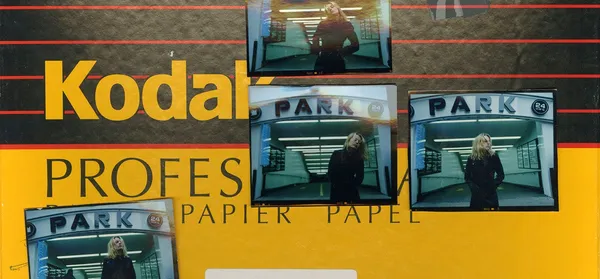Eye For Film >> Movies >> See Know Evil (2018) Film Review
See Know Evil
Reviewed by: Jennie Kermode

"Heroin Chic: Just Say No," said the Guardian. "It’s not beautiful; it’s ugly," said President Clinton. "We also disapprove of the fashion industry glamorising the use of addictive substances," said a group of designers in a statement - designers, it must me noted, who hadn't the first clue how to make money from grunge. Decrying the evils of heroin chic was the hip moral panic of the mid Nineties, and utterly perplexing for those of who had always looked that way and were enjoying our brief moment of being in fashion. Not because we were drug addicts, in most cases, but because, like the photographer who first launched the look, we were chronically ill.
Davide Sorrenti was born with beta thalassemia. No-one really expected him to live past infancy; he defied the odds but only by enduring a great deal of pain and the frustration of having to be hooked up to a machine every night. Physically fragile, he nonetheless had a great deal of energy and was determined to live life to the best of his ability, on his own terms. Because he knew that he wouldn't get time to climb a career ladder the way most people do, he put himself forward at every opportunity, making such a strong impression on those he met that no waiting was necessary. Although he was just a kid and looked about five years younger than his actual age, he had such a clear vision and such a passion for his craft - coming from a family of photographers - that industry heavyweights became seriously excited about his work. And then he discovered Kate Moss.
It was Sorrenti's pictures of the naturally skinny Moss and of Jaime King, who would become his girlfriend, that launched the fashion trend blamed for rising heroin use among young people. Interviewed here, King is quick to condemn the politicians who attacked Sorrenti's art because it was easier than addressing the social and economic factors creating despair in the young. Sorrenti himself protested that his photos were about being real, a backlash against the highly embellished, proudly artificial looks of the previous decade. They complemented what was happening in music and even in cinema, where they was a growing public interest in low budget, independent film. Yet Sorrenti's photography has been singled out and labelled evil. This film is partly about telling the story of his life, partly about trying to present a balanced reappraisal of his work.
Although it does fairly well on both scores, what really makes See Know Evil fascinating is the contrast in the ways different interviewees present the story. Some talk obsessively about Sorrenti's illness, repeating their belief that it's impossible to find the words with which to do so, and suggesting in a way quite unsettling to similarly ailing viewers that his early death was a blessing. Some talk of how inspiring it is that he achieved so much despite his illness whilst others seem to think that everything he did was because of it. Mercifully, there is no editorial voice promoting this obsession, and other interviewees are much more interested in talking about who he was as a person. Milla Jovovich, in particular, retains a tangible affection for him and recalls how he was always snuggling up with her even though she was dating his brother. Various models talk about what a joy he was to work with and how they wished they never had to be photographed by anybody else.
In the end, Sorrenti did become a drug addict, and if there's one thing left unconsidered here it's that perhaps he didn't see any reason why not to - after all, it would have brought him relief from pain and he didn't have a future to lose. Rather than representing some kind of death wish, it could easily have been another expression of his desire to live life on his own terms. It also fitted, in a way, with the edgy, gangsta image he tried to create for himself - an image that seems to have been perpetually undermined by his sweetness.
Strengthened by its contrasts and unwillingness to reach any simple conclusion, Charlie Curran's documentary is a much-needed antidote to the moral panic that doesn't shy away from the darkness but still makes way for brilliance.
Reviewed on: 10 Nov 2018















